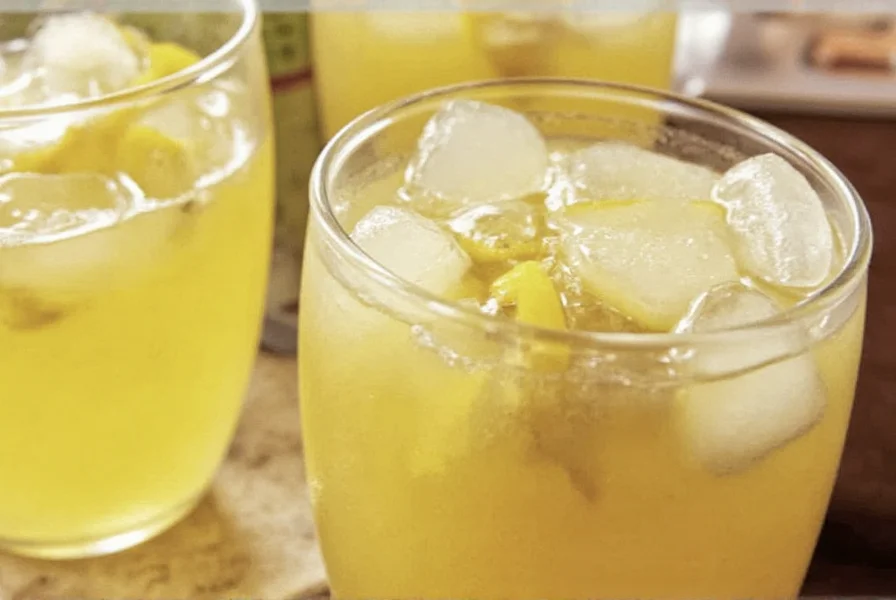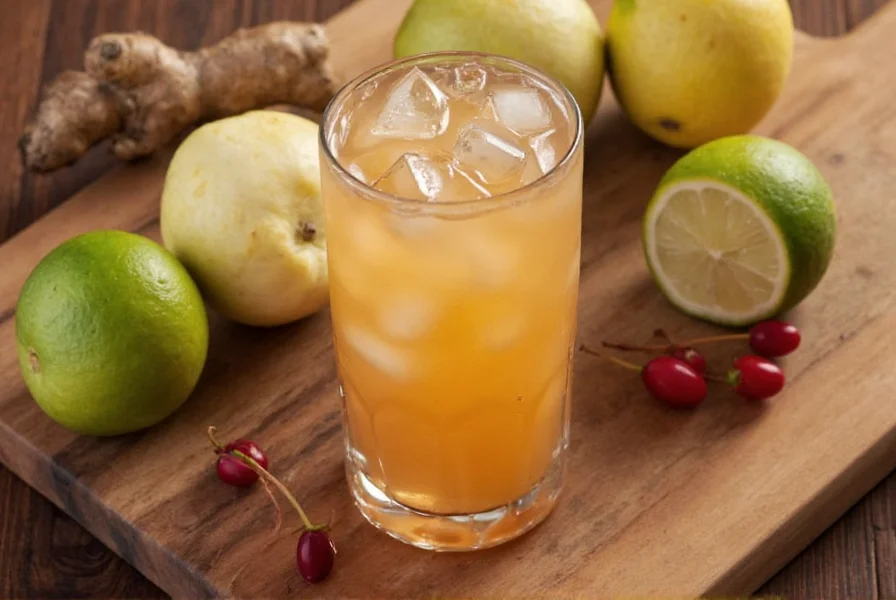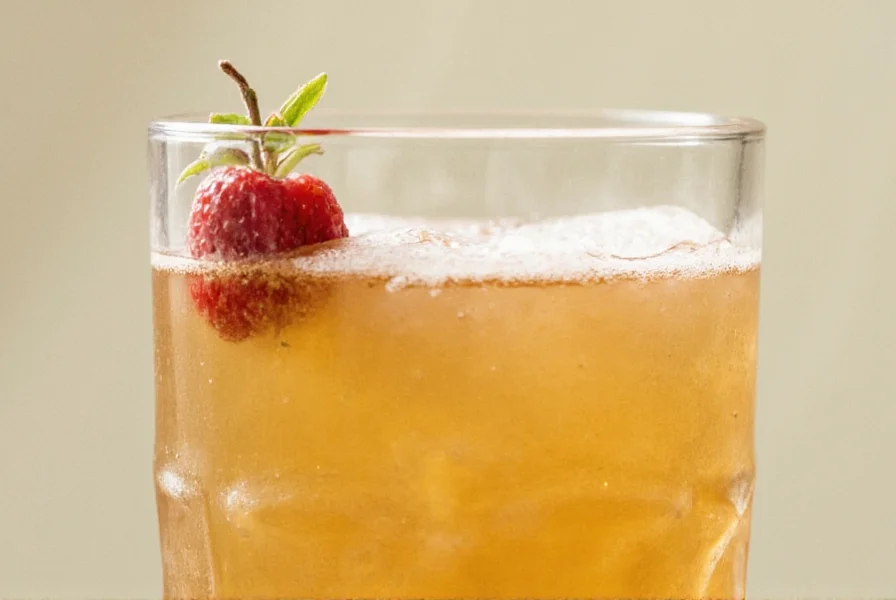What Exactly Is a Ginger Bug and Why Make One?
A ginger bug represents one of the simplest wild fermentation starters you can create at home. Unlike commercial yeast, this natural culture harnesses wild yeast and beneficial bacteria present on organic ginger's skin. The resulting culture transforms sweetened herbal teas or fruit juices into delightfully fizzy, probiotic-rich beverages through natural carbonation.
Creating your own ginger bug connects you to ancient fermentation traditions while providing complete control over ingredients. Many commercial sodas contain artificial flavors and excessive sugar, whereas homemade versions using a ginger bug deliver live probiotics, customizable sweetness levels, and authentic flavors without preservatives.
Essential Ingredients for a Successful Ginger Bug
The magic happens through just three simple components, but quality matters significantly:
| Ingredient | Why It Matters | Recommended Type |
|---|---|---|
| Ginger root | Provides wild yeast and bacteria from its skin | Organic, unpeeled (non-organic often treated with growth inhibitors) |
| Sugar | Feeds the microorganisms driving fermentation | Organic cane sugar (avoid honey which can kill cultures) |
| Water | Medium for the culture to grow | Filtered or spring water (chlorine-free) |

Step-by-Step Ginger Bug Creation Process
Creating a thriving ginger bug requires consistency but minimal effort. Follow this proven daily routine:
Day 1: Initial Setup
Combine 2 tablespoons freshly grated organic ginger (skin on), 2 tablespoons sugar, and 2 cups filtered water in a clean quart-sized mason jar. Stir well, cover loosely with a breathable cloth or coffee filter secured with a rubber band, and place in a warm spot (70-80°F/21-27°C) away from direct sunlight.
Days 2-5: Daily Feeding Routine
Each morning, add 1 tablespoon freshly grated ginger and 1 tablespoon sugar. Stir vigorously for 30 seconds to incorporate oxygen, which helps the beneficial bacteria thrive. You should notice increasing bubbles and a pleasant, slightly spicy aroma developing by day 3.
Day 6-7: Testing Readiness
Your ginger bug is ready when it consistently produces bubbles within hours of feeding and has a pleasantly tangy, gingery fragrance. To test, drop a small amount in a glass of sweetened herbal tea—if it fizzes within 24 hours, your culture is active and ready to use.

Troubleshooting Common Ginger Bug Issues
Even experienced fermenters encounter challenges. Here's how to address the most frequent problems when making a ginger bug recipe:
Problem: No Bubbles After Several Days
Solution: Ensure you're using organic ginger (non-organic often has growth inhibitors), maintain temperatures above 70°F (21°C), and try adding a pinch of unrefined sea salt which can stimulate microbial activity. Avoid metal utensils which can inhibit culture development.
Problem: Mold Growth on Surface
Solution: Discard immediately if you see fuzzy mold (black, green, or white). A thin white film may be kahm yeast, which is generally safe—simply skim it off and continue feeding. Prevent mold by using clean equipment, covering properly, and maintaining regular feeding.
Problem: Unpleasant Sour or Vinegary Smell
Solution: This indicates over-fermentation. Reduce feeding intervals or store in a slightly cooler location. A mildly sour aroma is normal, but strong vinegar smells suggest imbalance—try refreshing with equal parts new ginger and sugar.
Proper Storage and Maintenance Techniques
Once active, your ginger bug requires regular care to remain viable:
- Daily use: Keep at room temperature and feed daily with equal parts ginger and sugar
- Refrigerated storage: Feed, then refrigerate for up to 2 weeks. Revive by feeding daily for 2-3 days before use
- Long-term preservation: Dehydrate on unbleached parchment paper, then store in airtight container for months
Always reserve 1/4 cup of active culture before using in recipes to maintain your continuous starter. This practice ensures you always have a backup culture ready for your next batch of homemade ginger bug soda.
Safely Using Your Ginger Bug in Beverages
When incorporating your ginger bug into beverages, follow these safety-tested proportions:
- Brew 4 cups of strong herbal tea or fruit juice (cooled to room temperature)
- Add 1/4-1/2 cup sugar or honey (dissolved in 1 cup warm water)
- Stir in 1/2 cup active ginger bug culture
- Pour into flip-top bottles, leaving 1-2 inches headspace
- Ferment at room temperature for 24-48 hours until desired carbonation
- Refrigerate to slow fermentation and enjoy within 2 weeks
Always "burp" bottles daily during fermentation to release excess pressure and prevent explosions. Store finished beverages in the refrigerator and consume within 2-3 weeks for optimal safety and flavor.
Advanced Tips for Perfect Ginger Bug Results
Experienced fermenters enhance their ginger bug recipe with these professional techniques:
- Add a raisin or two during creation—natural yeasts on the skin boost fermentation
- Use a digital thermometer to maintain consistent 75°F (24°C) temperature
- Keep a dedicated glass stirring rod specifically for your culture
- Track pH levels (ideal range: 3.5-4.2) using test strips for optimal safety
- Experiment with adding complementary spices like cinnamon or cloves during beverage creation
Remember that each ginger bug develops its own unique microbial profile based on local environment, ginger source, and feeding routine. Document your process to refine your personal ginger bug recipe over time.
Frequently Asked Questions
How long does it take to make a ginger bug starter?
A ginger bug typically becomes active and ready to use in 5-7 days when maintained at room temperature with daily feedings. You'll notice increasing bubbles and a tangy aroma developing by day 3-4, with full activity by day 6-7 when it consistently produces carbonation within hours of feeding.
Can I use non-organic ginger for my ginger bug?
It's strongly recommended to use organic ginger as non-organic varieties are often treated with growth inhibitors like radiation or pesticides that prevent sprouting and can inhibit the wild yeast needed for fermentation. The beneficial microorganisms reside primarily on the ginger's skin, which is why organic, unpeeled ginger works best for creating a successful ginger bug starter.
Why isn't my ginger bug bubbling after several days?
Lack of bubbles usually indicates issues with temperature (below 70°F/21°C), non-organic ginger, chlorinated water, or inconsistent feeding. Ensure you're using organic ginger with skin intact, filtered water, maintaining temperatures between 70-80°F (21-27°C), and feeding daily with equal parts fresh ginger and sugar. Adding a pinch of unrefined sea salt can sometimes stimulate dormant cultures.
How do I know if my ginger bug has gone bad?
Signs of a compromised ginger bug include fuzzy mold (black, green, or blue), a rotten or putrid smell (beyond normal tanginess), or pink discoloration. A thin white film may be kahm yeast which is generally safe to skim off. Properly maintained ginger bugs should have a pleasantly tangy, gingery aroma and show consistent bubbling within hours of feeding.
Can I use honey instead of sugar in my ginger bug?
While honey contains natural yeasts, it also contains antimicrobial properties that can inhibit the development of a stable ginger bug culture. For initial creation, use organic cane sugar which provides consistent food for the microorganisms. Once your ginger bug is established, you can use honey in the final beverage recipes, but not during the starter culture development phase.











 浙公网安备
33010002000092号
浙公网安备
33010002000092号 浙B2-20120091-4
浙B2-20120091-4